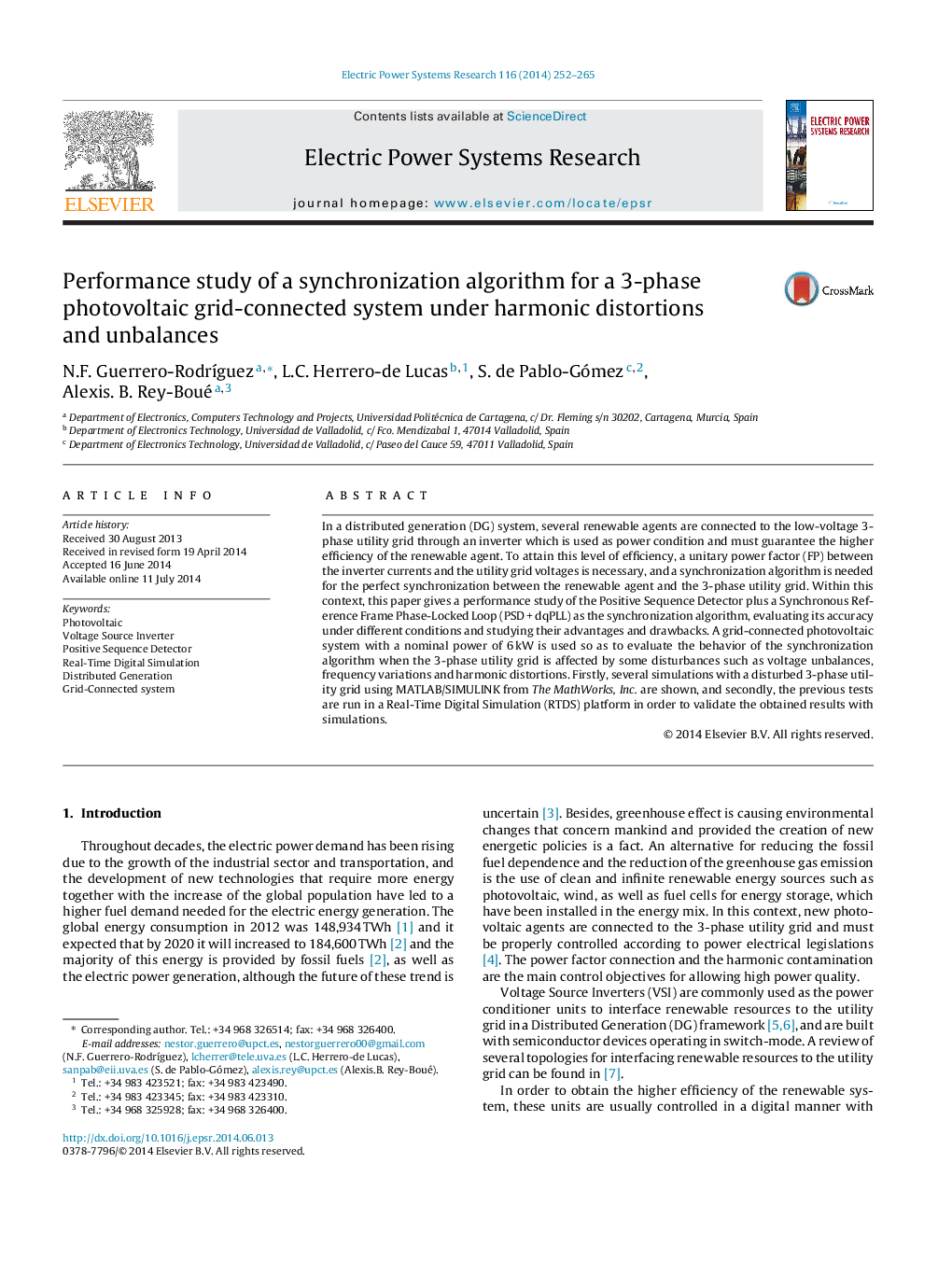| کد مقاله | کد نشریه | سال انتشار | مقاله انگلیسی | نسخه تمام متن |
|---|---|---|---|---|
| 704979 | 1460897 | 2014 | 14 صفحه PDF | دانلود رایگان |
• This paper gives a performance study of the Positive Sequence Detector plus a dqPLL.
• A real-time digital simulation platform is used to validate the results.
• With low-level harmonic pollution it is not a necessity to use a complicated synchronization algorithm.
• A significant attenuation of the harmonic contamination is attained when the PSD block is used.
• A good power factor can be obtained even though variations in frequency occur.
In a distributed generation (DG) system, several renewable agents are connected to the low-voltage 3-phase utility grid through an inverter which is used as power condition and must guarantee the higher efficiency of the renewable agent. To attain this level of efficiency, a unitary power factor (FP) between the inverter currents and the utility grid voltages is necessary, and a synchronization algorithm is needed for the perfect synchronization between the renewable agent and the 3-phase utility grid. Within this context, this paper gives a performance study of the Positive Sequence Detector plus a Synchronous Reference Frame Phase-Locked Loop (PSD + dqPLL) as the synchronization algorithm, evaluating its accuracy under different conditions and studying their advantages and drawbacks. A grid-connected photovoltaic system with a nominal power of 6 kW is used so as to evaluate the behavior of the synchronization algorithm when the 3-phase utility grid is affected by some disturbances such as voltage unbalances, frequency variations and harmonic distortions. Firstly, several simulations with a disturbed 3-phase utility grid using MATLAB/SIMULINK from The MathWorks, Inc. are shown, and secondly, the previous tests are run in a Real-Time Digital Simulation (RTDS) platform in order to validate the obtained results with simulations.
Journal: Electric Power Systems Research - Volume 116, November 2014, Pages 252–265
